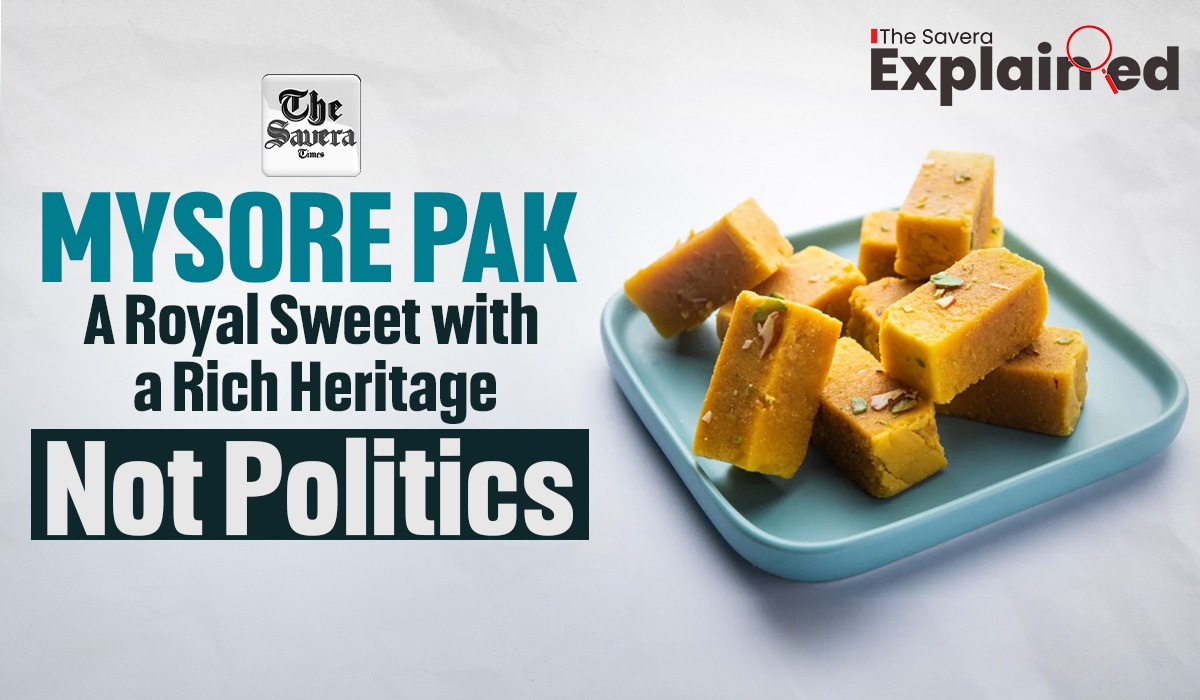
Amid the ongoing tensions soaring between India and Pakistan following the April 22 Pahalgam terror attack, a sweet is caught in the crossfire, Jaipur shopkeepers have said they are renaming ‘Mysore Pak’ to “Mysore Shree’ to reflect “national pride”, according to a report.
The development has come days after a group of men vandalised Karachi Bakery in Hyderabad and raised “anti-Pakistan” slogans in front of the shop.
Obviously, the word “pak” in the name of the beloved Indian sweet has nothing to do with Pakistan.
What does ‘Mysore Pak’ mean?
The sweet is called Mysore Pak as it originated in Karnataka’s Mysore (now, Mysuru) in the early 20th century. The term “pak” comes from the Kannada word ‘paaka’, which refers to the process of cooking by heating, baking or frying. Paaka in Kannada also refers to the sticky sugar syrup obtained by simmering sugar with equal amounts of water.
Significance?
Mysore Pak is famous in India for its rich taste, royal origin, and cultural significance. Originating in the Mysore Palace, it quickly became a symbol of royal indulgence and tradition. Made with just a few ingredients—gram flour, ghee, and sugar—its melt-in-the-mouth texture and deep flavor make it a festive favorite, especially in South India.
It’s widely served during festivals like Diwali and weddings, and is considered a traditional offering in temples. Its long-standing association with Karnataka’s heritage and its simplicity, combined with decadence, have made Mysore Pak a beloved sweet across generations and regions in India.
How did Mysore Pak originate?
The sweet originated in the period when Mysuru was under the rule of Krishna Raja Wodeyar IV of the Wodeyar dynasty. Krishna Raja, whose reign lasted from 1902 to 1940, ushered in several re-forms. For instance, under his rule, Bangalore became the first Asian city to get electricity.
Besides being a visionary king, Krishna Raja was also a foodie. In the Amba Vilas Palace, where he lived, he had a huge kitchen whose royal cook was Kakasura Madappa.
It was Madappa who came up with Mysore Pak while experimenting with gram flour, ghee, and sugar. Delighted after tasting the sweet, Krishna Raja asked for its name. As Madappa stood silent, the king named the sweet ‘Mysore Pak’ in a bid to promote the city which he ruled.
In the subsequent years, the sweet gained prominence, becoming a house-hold dessert. Today. Mysore Pak is con-sumed and distributed to mark special occasions, especially in South India.
Notably, Madappa’s family continues to run a sweet shop in Mysuru. Speaking about the controversy over the name of the sweet, Nataraj, the great-grandson of Madappa, said Mysore Pak should be called by its rightful name.
How is Mysore Pak prepared?
Mysore Pak is prepared using ghee, gram flour and sugar. Ghee (clarified butter) is first heated on a moderate flame until it becomes hot and aromatic, once ready, gram flour is added to the ghee and sautéed continuously for several minutes until the mixture turns a rich brownish hue. Separately, sugar is dissolved in water and boiled until it reaches a syrupy consistency.
The roasted ghee and gram flour mixture is then gently added to the hot sugar syrup, with constant stirring to ensure a smooth, lump-free texture.
Once the mixture thickens and begins to release ghee, it is poured into a greased tray and allowed to cool. After setting, the Mysore Pak is cut into small pieces. If it melts in the mouth, it is considered a well-made sweet.
